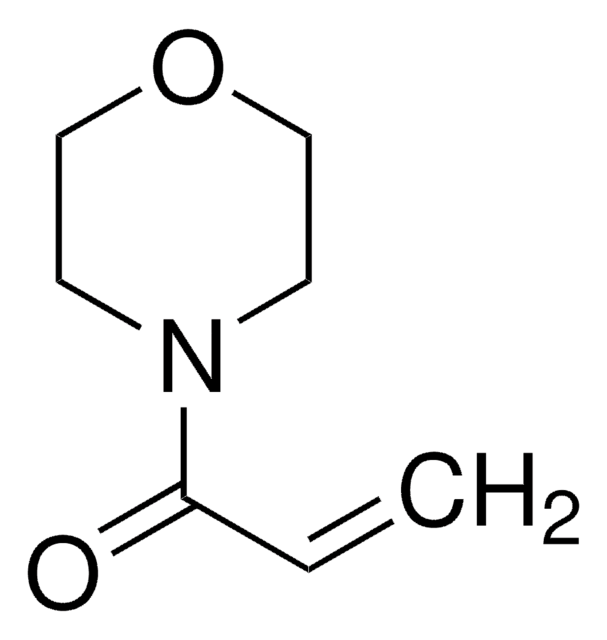415464
N-Vinylcaprolactam
98%, stabilized
Sinónimos:
1-Ethenylazepan-2-one, 1-Ethenylhexahydro-2H -azepin-2-one, 1-Vinylazepan-2-one
Seleccione un Tamaño
About This Item
Productos recomendados
Nivel de calidad
Ensayo
98%
Formulario
solid
contiene
~20 ppm HO-TEMPO as stabilizer
bp
128 °C/21 mmHg (lit.)
mp
35-38 °C (dec.) (lit.)
densidad
1.029 g/mL at 25 °C (lit.)
temp. de almacenamiento
2-8°C
cadena SMILES
C=CN1CCCCCC1=O
InChI
1S/C8H13NO/c1-2-9-7-5-3-4-6-8(9)10/h2H,1,3-7H2
Clave InChI
JWYVGKFDLWWQJX-UHFFFAOYSA-N
Categorías relacionadas
Descripción general
Palabra de señalización
Danger
Frases de peligro
Consejos de prudencia
Clasificaciones de peligro
Acute Tox. 4 Dermal - Acute Tox. 4 Oral - Eye Irrit. 2 - Skin Sens. 1 - STOT RE 1
Órganos de actuación
Liver,Upper respiratory tract
Código de clase de almacenamiento
6.1C - Combustible acute toxic Cat.3 / toxic compounds or compounds which causing chronic effects
Clase de riesgo para el agua (WGK)
WGK 1
Punto de inflamabilidad (°F)
213.8 °F - closed cup
Punto de inflamabilidad (°C)
101 °C - closed cup
Equipo de protección personal
dust mask type N95 (US), Eyeshields, Gloves
Elija entre una de las versiones más recientes:
¿Ya tiene este producto?
Encuentre la documentación para los productos que ha comprado recientemente en la Biblioteca de documentos.
Los clientes también vieron
Filtros activos
Nuestro equipo de científicos tiene experiencia en todas las áreas de investigación: Ciencias de la vida, Ciencia de los materiales, Síntesis química, Cromatografía, Analítica y muchas otras.
Póngase en contacto con el Servicio técnico















